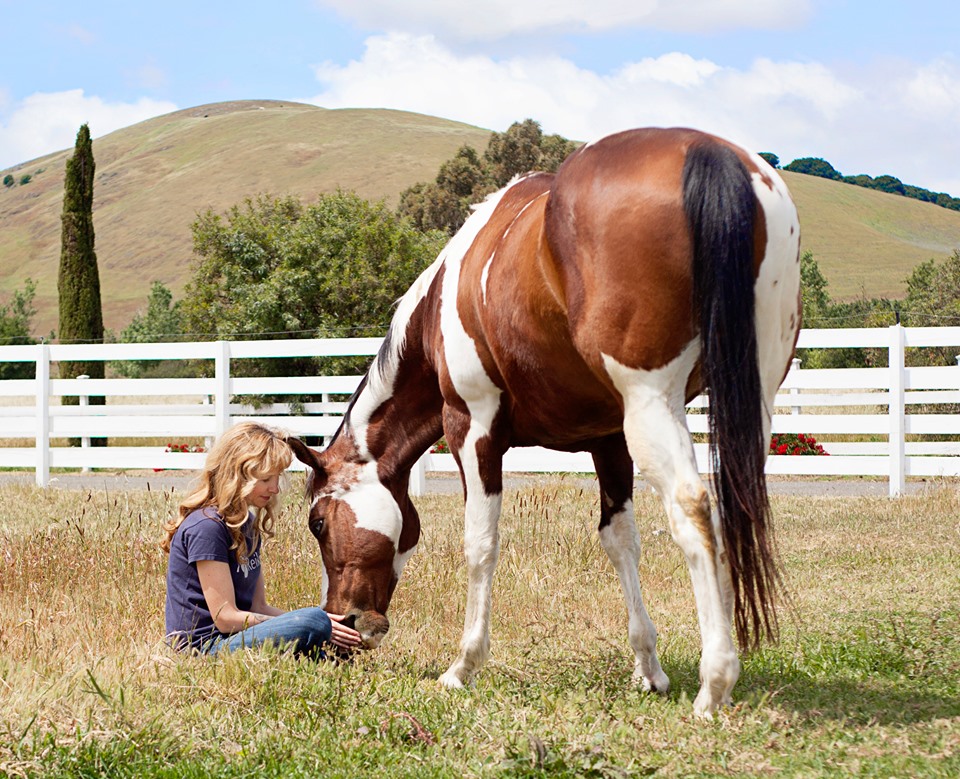
Many animal communicators are trained in the system of Reiki and find the two go hand-in-hand, but too often the lines get blurred. What is the difference between an Animal Communication (AC) session and an Animal Reiki (AR) session, and why does this matter in a professional context?
AC and AR are complementary in many ways, but the two techniques have different aims. If you decide to practice both AC and AR professionally, keeping the two modalities separate will help you have clear intentions, be at your best for each, and will clarify for your clients and students what to expect for each kind of session.
The goal of Animal Communication is to create a dialog between the communicator and the animal: to listen to what the animal has to say, interpret it, and share that information to the animal’s human companion, often by clarifying issues that are confusing or unknown (for example surrounding unknown behavior problems, the dying process, or lost animals). AC, like AR, begins with a meditative process, but the goal is different in that communicators create an active dialogue with the animal.
An Animal Reiki practitioner’s goal is to become as quiet and open as possible so that they can hold a space of peace and compassion for the animal, which can have a profound healing effect. Because practitioners do not direct the healing or manipulate energy towards this or that problem, focusing on what’s “wrong” rather than keeping an open mind can create obstacles to AR connection. The animal leads the session, deciding if, when and how to connect with the healing space created. Scientific studies show that Reiki activates the parasympathetic
response, bringing balance, stress-relief, pain-relief and a sense of wellbeing to the client.
Although AR practitioners may or may not receive intuitive information during the treatment, such information is merely a by-product of the deep connection, not the goal or purpose of the treatment. To summarize: AR and AC begin with a meditative process, however the goal is for practitioners to passively “hold space” to support animals to heal themselves.
For many people who practice AR, intuitive information flows more freely, while others may not experience receiving any intuitive information. Either way, intuitive messages are not indicators of whether or not the AR treatment was successful. For AC practitioners, if information comes through during an AR session, it often simply indicates a shift towards balance or an energetic “echo” of a past experience as it heals and releases. When this happens, if the AR practitioner also practices AC, they can suggest scheduling an AC session at a later time, when they can fully focus on these messages with an active intention.
As a practitioner, being active and passive are two opposite ways of approaching a situation. It’s impossible to do AC and AR at the same time, and very difficult to flow from one to the other, back and forth, during a single meditation session. In my experience, mixing AC and AR becomes very confusing in many ways.
Confusing for AR students:
Because I didn’t want to divide my meditation focus and intention, I decided to only focus on Reiki in my professional practice, which has greatly improved my AR practice. Many students think that by learning AR, they are automatically becoming an animal communicator, or feel disappointed if their AR practice doesn’t result in receiving psychic messages from the animals.
Confusing for Animals:
One of the beautiful benefits of the AR experience for animals is that they can truly let go into the wide open space of peace and compassion where there are no words, just the light of love and the light of healing possibility. Talking to animals and creating AC expectations for dialogue during this sacred quiet time may confuse them, not allowing them to fully relax and experience the healing space.
Confusing for AR and AC Clients:
If the client doesn’t understand the difference between the two, it can create confusing expectations. Clients who have received an AR session mixed with an AC reading may expect all healing sessions to include communication, and vice versa. This is problematic because not all AC practitioners practice AR.
Confusing for Animal Organizations:
Although AC ethics do not condone going against vet advice, I’ve seen two animal organizations ban AR because an animal communicator (mixing AR and AC) shared psychic messages which went directly against the veterinarian’s health plan from the animals. Despite my attempts at explaining that this was AC and not AR, both organizations stopped welcoming AR classes, and one had the supervising veterinarian stop all volunteer AR sessions for the shelter animals in their care. Despite attempts to explain the difference, all AR classes and volunteer sessions were banned, which could have been prevented if AC and AR were understood to be separate from one another.
All in all, to be clear with animals, students, clients and the public, to recognize each of the professions in their own right and to acknowledge the training, skills and intention that each require, I highly recommend keeping AC and AR separate from one another, in discussion, in teaching and in practice.
If you’re a SARA member, please be sure to listen in on the call where guest speaker Thea Strom, Animal Communicator and Animal Reiki Teacher explains the differences between AR and AC in more detail.

Excellent summary! I listened to Thea’s talk as well, which I found extremely helpful. I highly recommend it for those of us interested in both AR and AC.